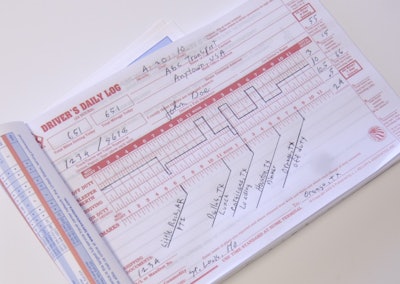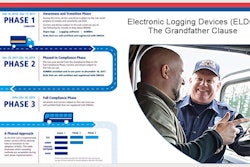
There’s been a mighty strong interest in the poll that ran here at Overdrive earlier this week, something of a follow-up about pressure from whatever external quarter it comes to run counter to the code that so many longtime truck drivers operate by — the very simple and sensibly safe drive when rested, sleep when tired. The poll question asks, specifically, about situations in which violations of that code may not be so cut and dried but what is abundantly clear is other regulatory violations would be the result of caving to wherever the pressure is coming from, i.e. a shipper/receiver, broker or carrier operations.
As was also shown in early results from our polling on the issue of detention at shippers and receivers since the electronic logging device mandate, as of this morning, about half of readers see external pressure to violate the hours of service rules having risen since December 2017 when the mandate came down. If that can be construed as remotely close to an accurate reflection of the state of play along the supply chain when it comes to hours, it might represent yet another hoped-for result of mandated ELDs yet to materialize. That hope: that an increase in necessary cooperation among parties (whether between drivers and their employing carriers and/or shippers and brokers), boost of a sort of we’re-in-this-together sense in planning and partnerships, could potentially release owner-ops and drivers from assumption of so much of the risk inherent in hours rules violations.
While actual hours of service violations recorded during inspections are way down since the mandate for obvious reasons, as we’ve noted in prior reporting, those violations that can actually get you put out of service and bring a hefty ticket … well, let’s just say that unless the back office is actively involved in editorial efforts in an AOBRD system, taking on such a risk in any eight-day period with a chance of inspection has grown much more risky.
Hence, perhaps, what increased pressure that exists. Drivers face increased risks, push back against pressure to violate, and that’s met with one of those equal and opposite reactions quite scientifically, as it were.
Yet not everyone agrees that external pressures to violate the regs are being truly felt, as M.R. Phillips commented under the poll: “The pressure I feel from the ELD is not from management. The pressure I feel is from me, the driver.”
The tick, tick, ticking of the clock, given the nature of the 14-hour on-duty provision of the hours of service, if one can extrapolate.
Paul Bazyldo underscored this with his comment under the poll: “I have long-term relationships with the brokers and customers I deal with. They know better than to even ask me to run something against the HOS regulations. In fact, most even insist that I don’t run in violation. They know if something were to happen, they too could face legal repercussion. We have a mutual respect for each other, that has been built over a number of years.”
Increased pressure, largely, he and others noted, isn’t coming from external living and breathing sources, necessarily, but rather more logically stems from inside, a response to the big stew of individual haulers dealing with a new technology and a lack of flexibility inherent in the rules the tech helps record.
Here at MATS over the past day or so I’ve had conversations with drivers involved with some of the slow-roll events attempting to build toward a shutdown protest in April. Some of them half-expect the FMCSA to reintroduce some flexibility with a rulemaking during the proceedings here — DOT Secretary Elaine Chao’s appearance and “keynote” speech on Friday might well underscore that, given it’s not exactly normal for this show. (I truly don’t have any inside track on whether the hours-change draft work we know regulators have been doing is near done or not.)
Other operators, at once, in more than one conversation yesterday (though a minority for sure) pushed back against the flexibility conventional wisdom. Don’t give me more flexibility. Flexibility = more capacity = reduced rates.
For those who are experiencing external pressure, too, there is of course an avenue for that opened up in tandem with the electronic logging device mandate itself, and some drivers are using it to effect. That would be the whistleblower protections put it by the FMCSA’s so-called “Coercion Rule,” which is more of an anti-coercion rule. I wrote about just how to blow the whistle on problem supply chain actors when it comes to pressures to violate regs in this post from last year.
Going so far as to report a carrier, shipper/receiver or broker often, however, isn’t necessary, as one trucker put it to me this week:
“I have a very simple technique on the very rare occasions I get pressure” to violate hours, this trucker said. “I simply ask, “How do you spell your last name? I want to get it right in the National Consumer Complaint Database complaint to FMCSA, and the email to our director of safety.”
Only once, he said, did the conversation then progress to: “Do you think you’ll be fired before or after the FMCSA starts the investigation of the complaint.”
A little food for thought, as it were.
In any case, as the show opens today in Louisville for those in attendance, expect plenty lively discussion in the seminar rooms and parking lots and around exhibit booths at MATS. If you see me walking the halls, say hi.
If you haven’t weighed in on the poll mentioned at the top of this post, find it at this link.











